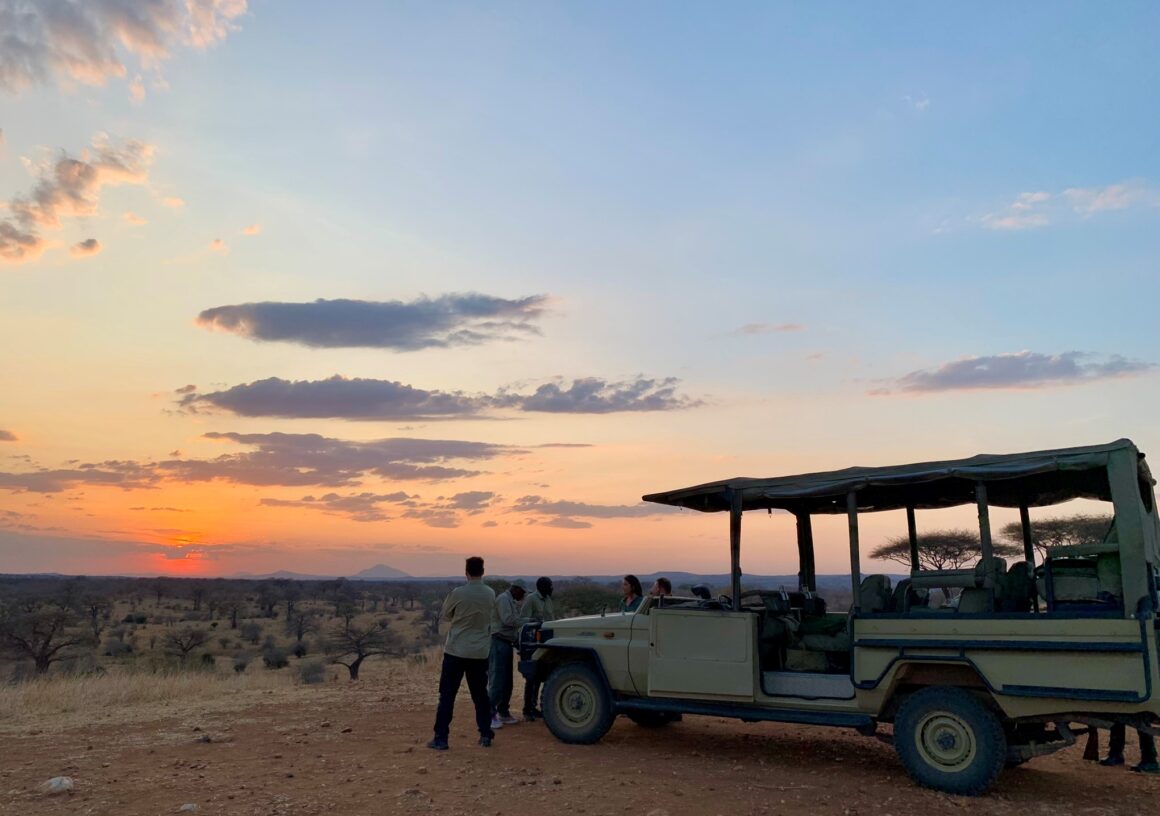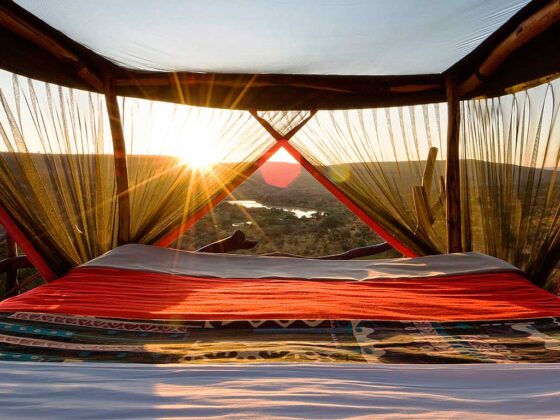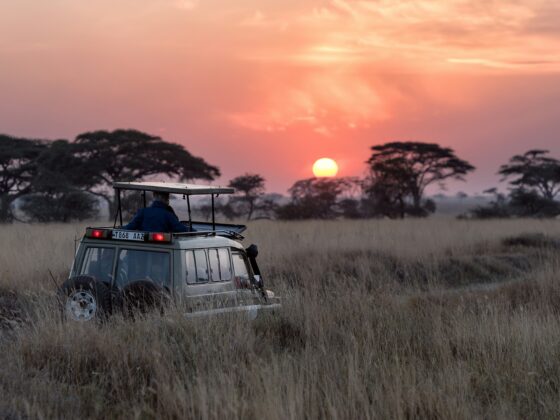From classic pop-top Land Cruisers to custom open-sided 4x4s, different types of safari vehicles are used across Africa depending on the terrain, regulations, and style of trip.
The safaris we tend to book and recommend use three main types of safari vehicle – closed Landcruisers with pop top roofs; open-sided 4×4 vehicles with roof canopies; completely open 4×4 safari vehicles.
Here’s what you need to know about the most common land-based safari vehicles and where you’ll find them.
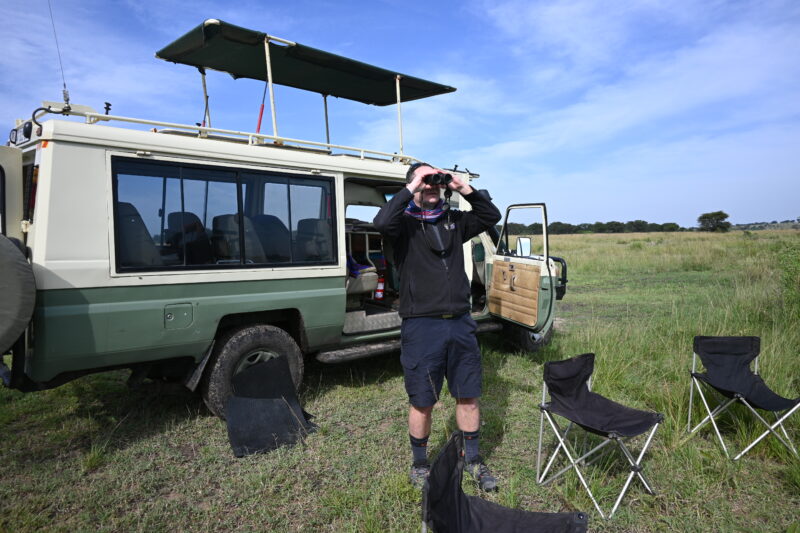
Closed Land Cruisers
A staple of East African safaris, pop-top Land Cruisers (and sometimes modified Land Rovers) are built for adventure. These rugged 4x4s are ideal for getting between national parks on public roadways as well as exploring protected areas when the roof pops up for panoramic game viewing.
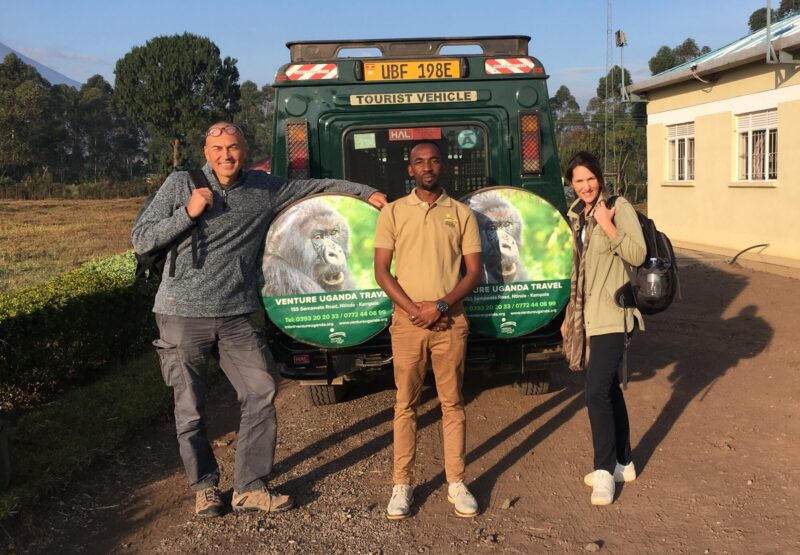
Where You Tend to Find Them:
National parks/reserves in East Africa:
- Kenya (Maasai Mara, Amboseli, Tsavo, Samburu)
- Tanzania (Serengeti, Ngorongoro Crater, Tarangire)
- Uganda & Rwanda
Why They’re Used:
- Flexibility and Comfort – East African safaris often involve road transfers between parks, so these Land Cruisers give great flexibility being suitable for driving on public roads, and in the park when the roof can be raised for unobstructed game viewing. These types of vehicles also increase comfort because they help to shield you from wind, dust, rain and sun, and also help to guard against the morning or evening chill.
NB.If you are flying to a private conservancy in East Africa, you are more likely to have your game drives in an open vehicle (see below).
Typical Features:
- Seating for 4–6 guests in three forward-facing rows. 2-4 guests offers optimum comfort taking into account your luggage as well.
- Pop-up roof or removable roof panels for standing game viewing – with some vehicles the whole roof pops up, and with others there are individual hatch panels for each row of seats with a sun shade above.
- Charging points and a fridge/cool box for drinks
- Reinforced suspension for rough terrain
- Easy to get in and out of
My opinion:
- Pros – Great for an overland touring trip in Eastern Africa which combines several different parks/reserves, e.g Tanzania’s Northern Circuit. Overland touring can help to keep costs down (compared to flying). Good for families with younger children who want a bit more security. Provides protection from the elements. Easy to get in and out of the vehicle.
- Cons – You have to stand up to look out of the roof hatch – you can do this when driving along in a park, as well as when stopped but you may need to hold on tight due to bumpy roads/tracks. Game viewing in an open vehicle offers better visibility when seated, and tends to be more exciting.
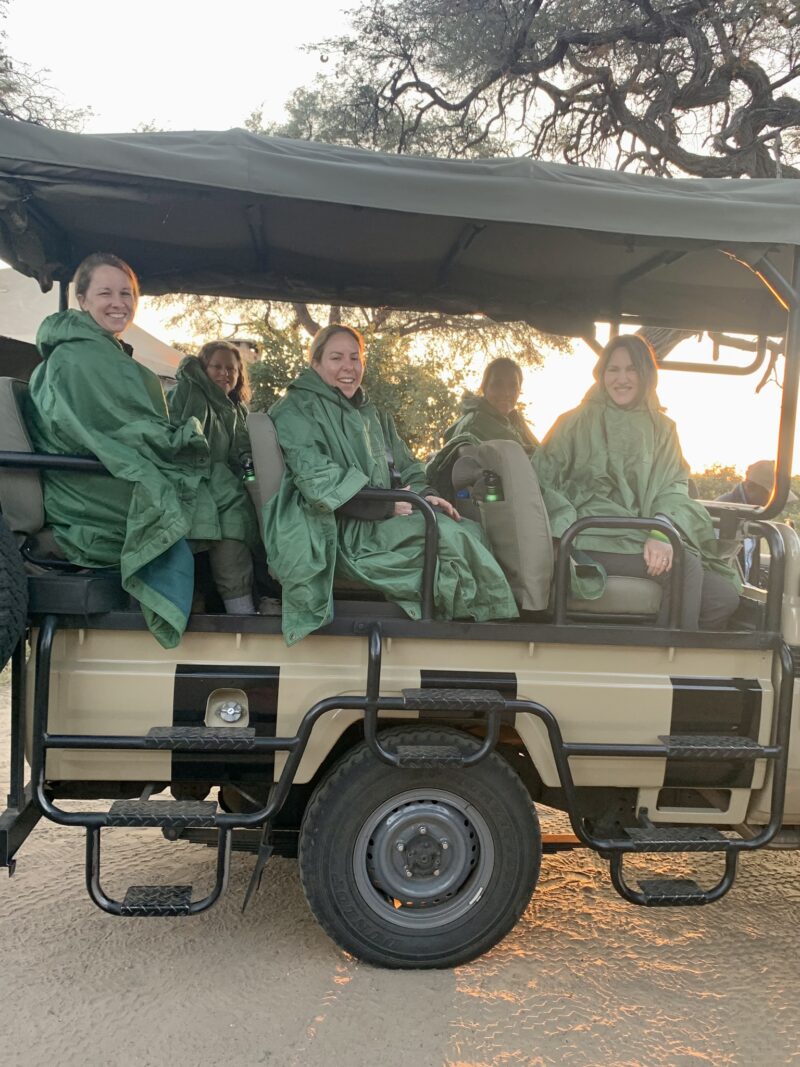
Open Safari Vehicles
Open safari vehicles are standard across Southern Africa, particularly in private reserves and national parks where off-road driving is permitted. These have open sides, elevated, tiered rows of seats for maximum visibility. Some have a canvas roof – and in East Africa they often have roll-away clear screens for rain protection too.
In Southern Africa, particularly in Zambia and South Africa it is also common to find completely open 4×4 vehicles (no roof).
These open-style vehicles offer an immersive and unobstructed wildlife experience.
Sitting in an open vehicle means you have a lot more exposure to the weather conditions however and so you should pack appropriately.
Where You’ll Find Them:
- South Africa (Kruger, Sabi Sands, Madikwe, Timbavati)
- Botswana (Okavango Delta, Chobe, Moremi)
- Zambia (South Luangwa, Lower Zambezi, Kafue)
- Zimbabwe (Hwange, Mana Pools)
- Namibia (Etosha, Damaraland)
Why They’re Used:
- Private Reserves & Off-Roading – Many areas allow off-road tracking, and open vehicles provide better visibility for both guests and guides.
- Warmer, Drier Climates – In Southern Africa, enclosed vehicles aren’t necessary for protection from rain or wind as frequently as in East Africa but I speak from experience when I say you should travel with all weather in mind! Wear layers for the change in temperature common through the safari day, pack a good sun hat and sunglasses, rain jacket/windbreaker and a scarf is good for cold, wind, dust and sun.
- Enhanced Wildlife Interaction – Without glass windows, guests feel fully immersed in the bush.
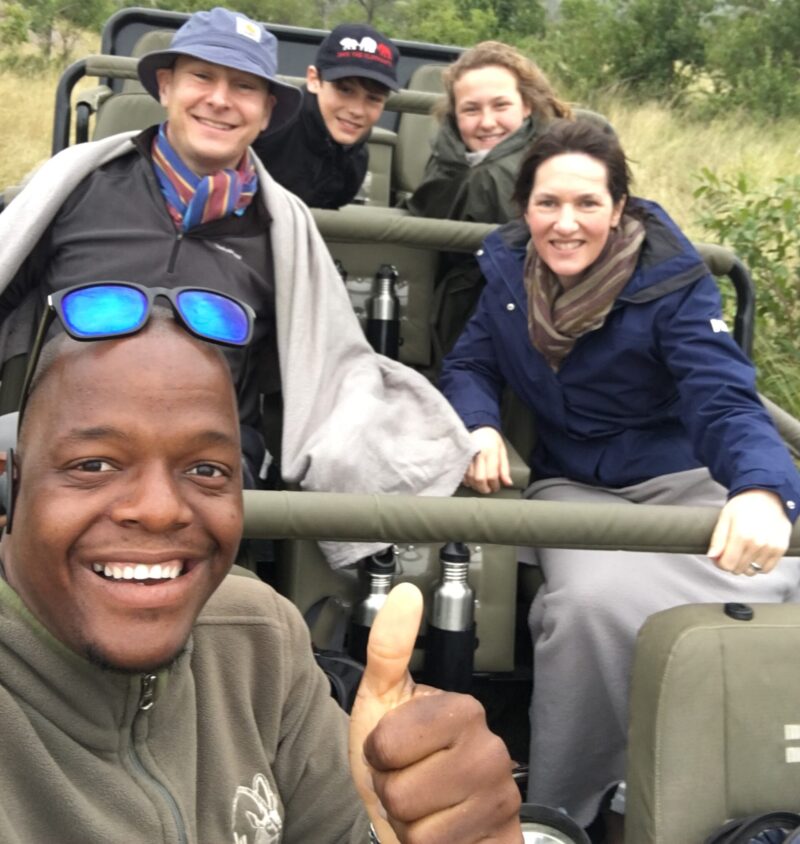
Variations in Setup:
Configuration varies from camp to camp. However you’ll often find:
- 3 rows of seating – You can usually expect 3 rows of tiered seating with 2 seats per row (and sometimes 3 seats per row). 2 seats per row gives everyone a ‘window’ seat. At some camps, you’ll have a driver/guide AND a tracker/spotter sat in the front, while at others you’ll just have a driver/guide.
- Fewer seats – used for more exclusive experiences, for example specific photographic tours in modified vehicles.
- Tracker Seat – Particularly in Zambia and South Africa, a seat on the front of the vehicle allows a tracker to spot animals and use a spotlight during night drives.
- Additional Features – Some open vehicles have built-in fridges, charging points, or bean bags for photographers. There are usually seat back pockets for water bottles and a shelf behind the driver with reference guides/maps, a place to stash binoculars. Many camps and lodges also provide blankets for chilly mornings and even hot water bottles. Some provide rain ponchos.
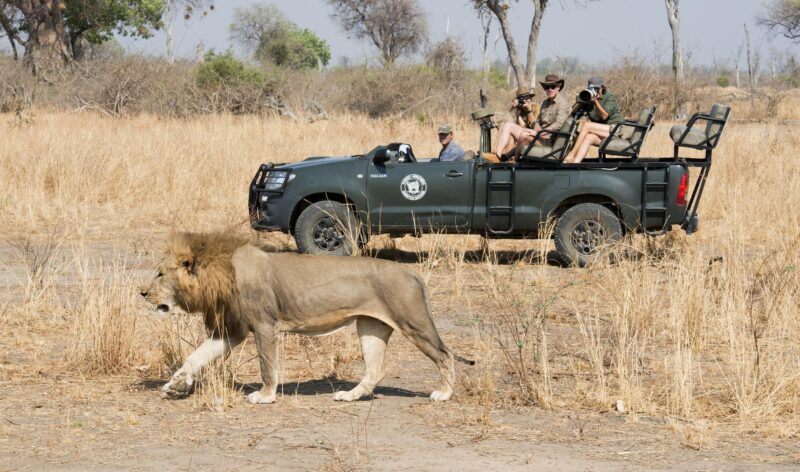
Where to Sit?
- Front Row – The first row of seats behind the guide is generally the easiest to get into and also great for hearing exactly what the guide has to say. You don’t have anyone in front of you to obscure your photos. You are not as elevated as you would be with the seats behind.
- Middle Row – A very comfortable and sociable position giving you opportunities to speak to people in front and behind and hear your guide well. A good middle-ground.
- Back Row – Can be a bumpy ride sitting over the back wheel springs, quite an elevated position to climb up into from the ground. Can be difficult to hear the guide sometimes. Great elevated view! Can be very exciting when wildlife passes by the rear of the vehicle.
- Passenger Seat – If this seat is not taken by a spotter then it is usually left empty. However, some guests may like to sit here – it’s particularly good for more elderly guests or those with reduced mobility as it is easier to get into.
- Access: you climb in and out of the vehicle using the staggered step plates and grab rails. The back row of seats is the highest with the ones at the front the easiest to access. Some camps have additional platforms/stairs to help guests get in and out.
- Etiquette: when sharing drives with other guests, it is accepted safari etiquette to be open to changing seats each drive so everyone gets a chance to experience different positions.
My opinion:
- Pros: Excellent for full immersion in the safari experience / best visibility.
- Cons: Exposed to all weather – can be cold/dusty/windy. More difficult for those with mobility issues to get in and out of. May not be suitable for families with younger children.
What About Minibuses?
You may see minibuses (often Toyota Hiaces) on safari, particularly in Kenya and Uganda. These vehicles are generally used for more budget-friendly tours and have pop-up roofs for game viewing.
Why the Differences?
The type of vehicle you’ll use depends on a variety of factors:
- National Park Rules – Some parks only allow closed vehicles (e.g. Ngorongoro Crater).
- Climate & Comfort – Open vehicles work well in dry, warm climates, while closed vehicles protect against dust, wind, and rain.
- Wildlife Tracking – Open vehicles allow guides and trackers to follow animals more easily in private reserves.
Choosing the Right Vehicle for Your Safari
When booking a safari, it’s worth considering what kind of experience you want. If you’re travelling in East Africa and transferring between areas by road, expect a sturdy pop-top Land Cruiser. If you’re flying-in to a conservancy/reserve, you are more likely to have game drives in an open 4×4 vehicle. In Southern Africa, an open vehicle is the norm. Either way, each option is designed to maximize your game viewing and comfort in the wilderness!
